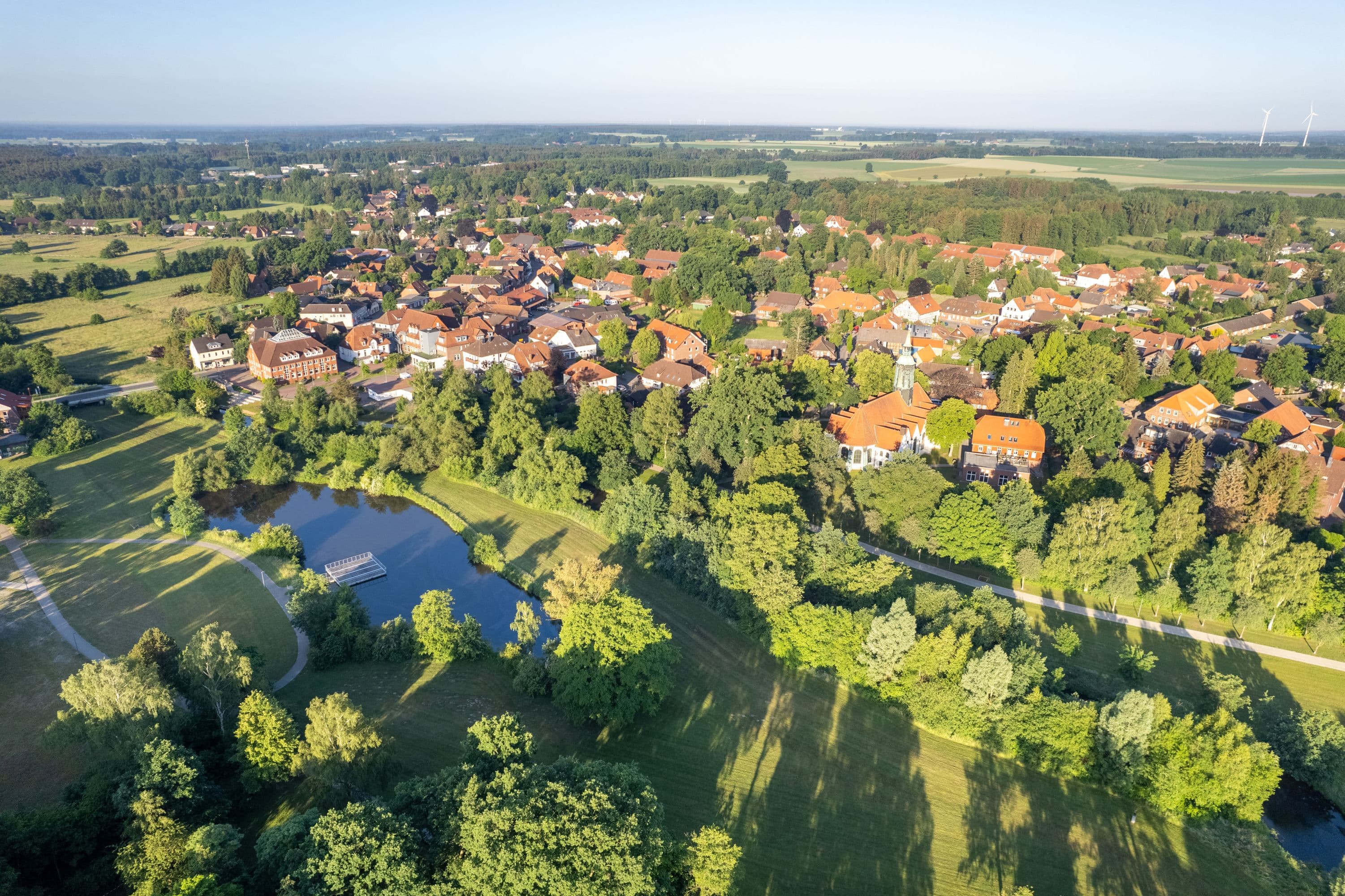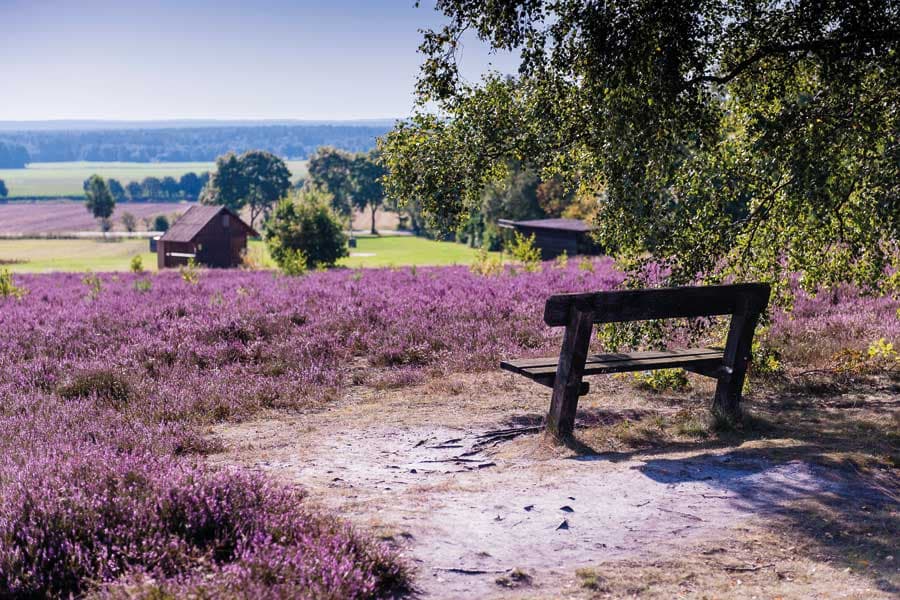
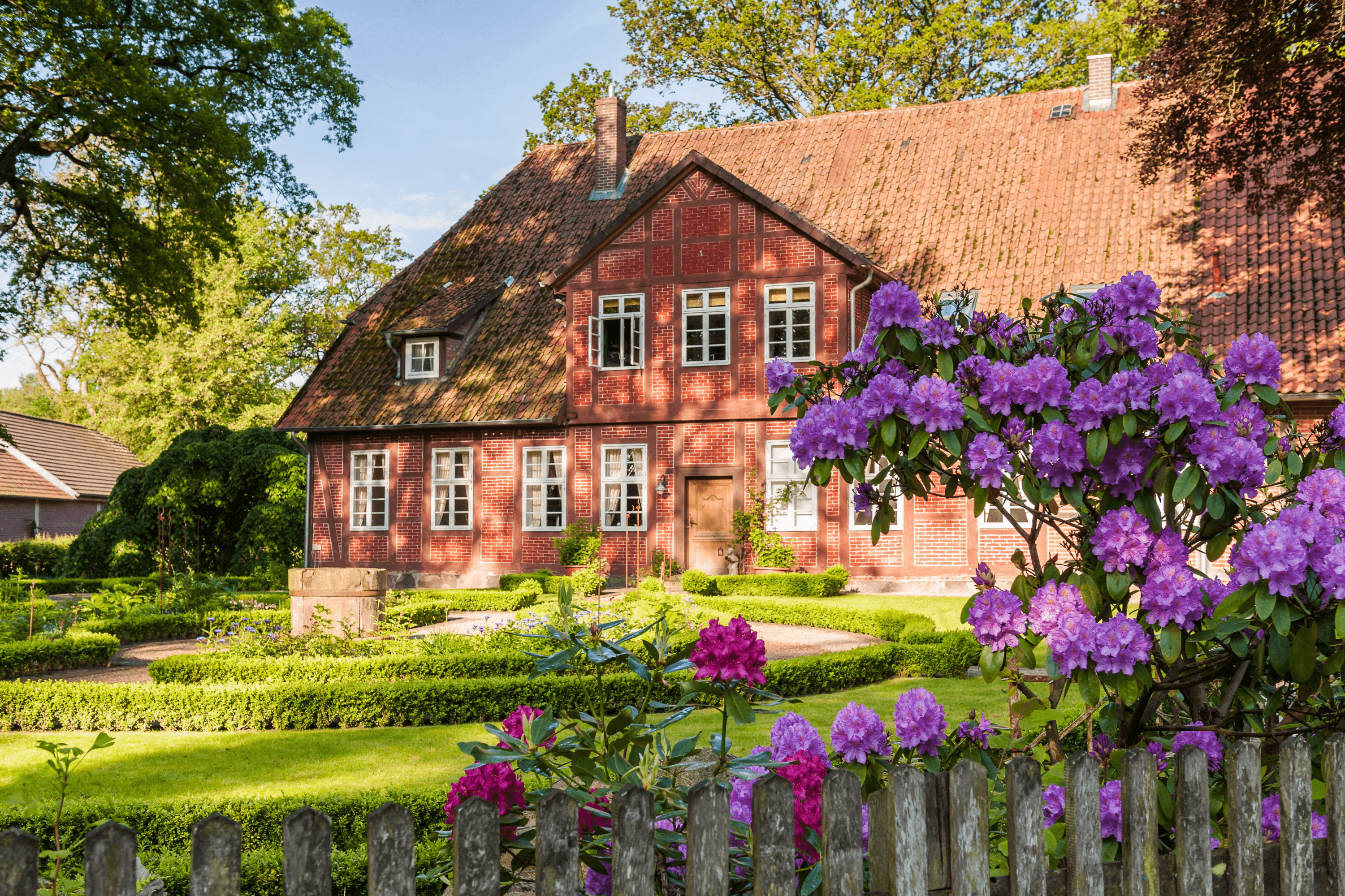
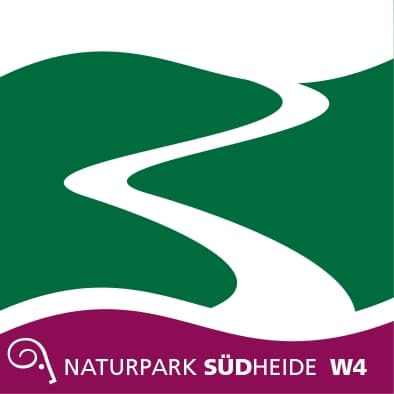
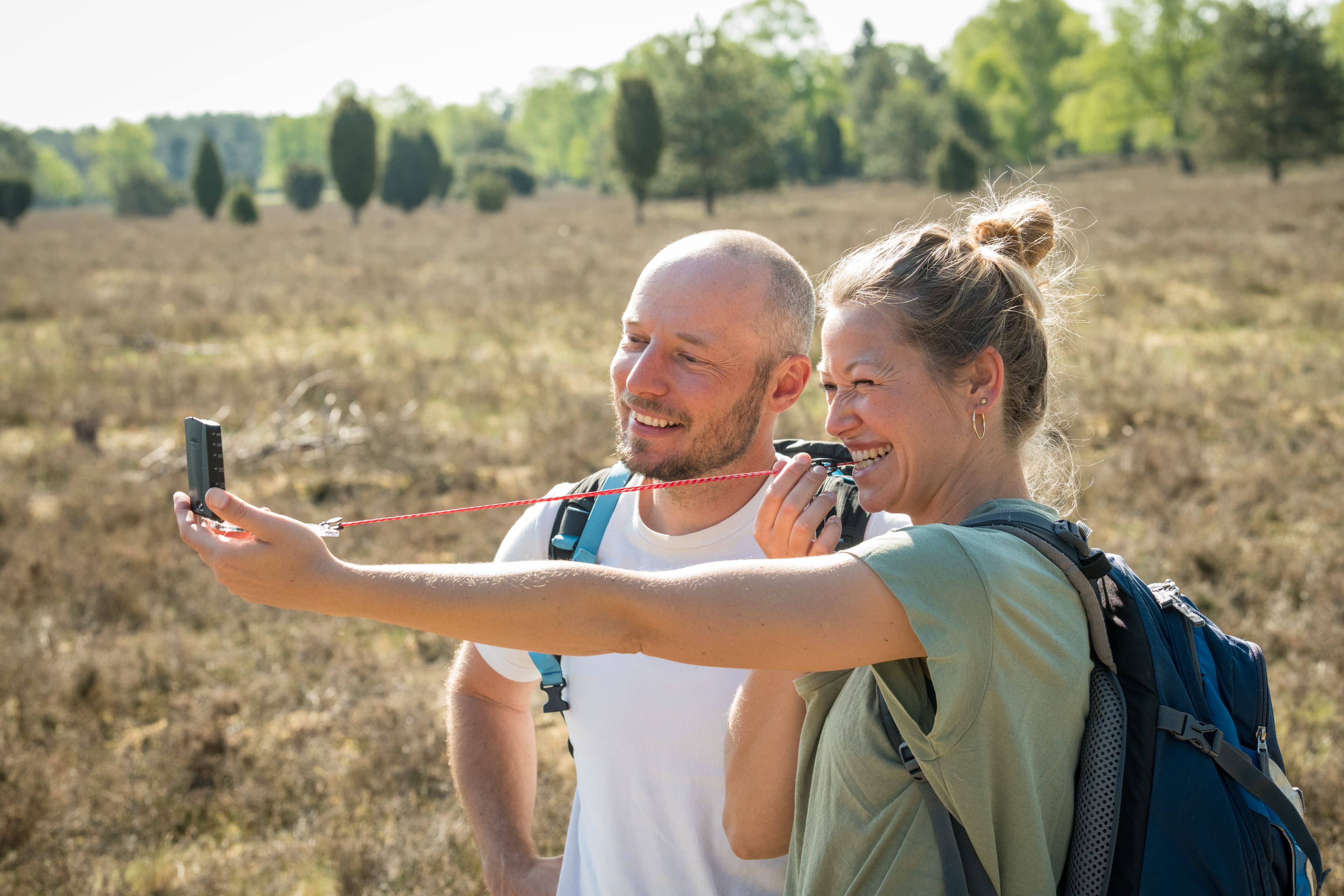
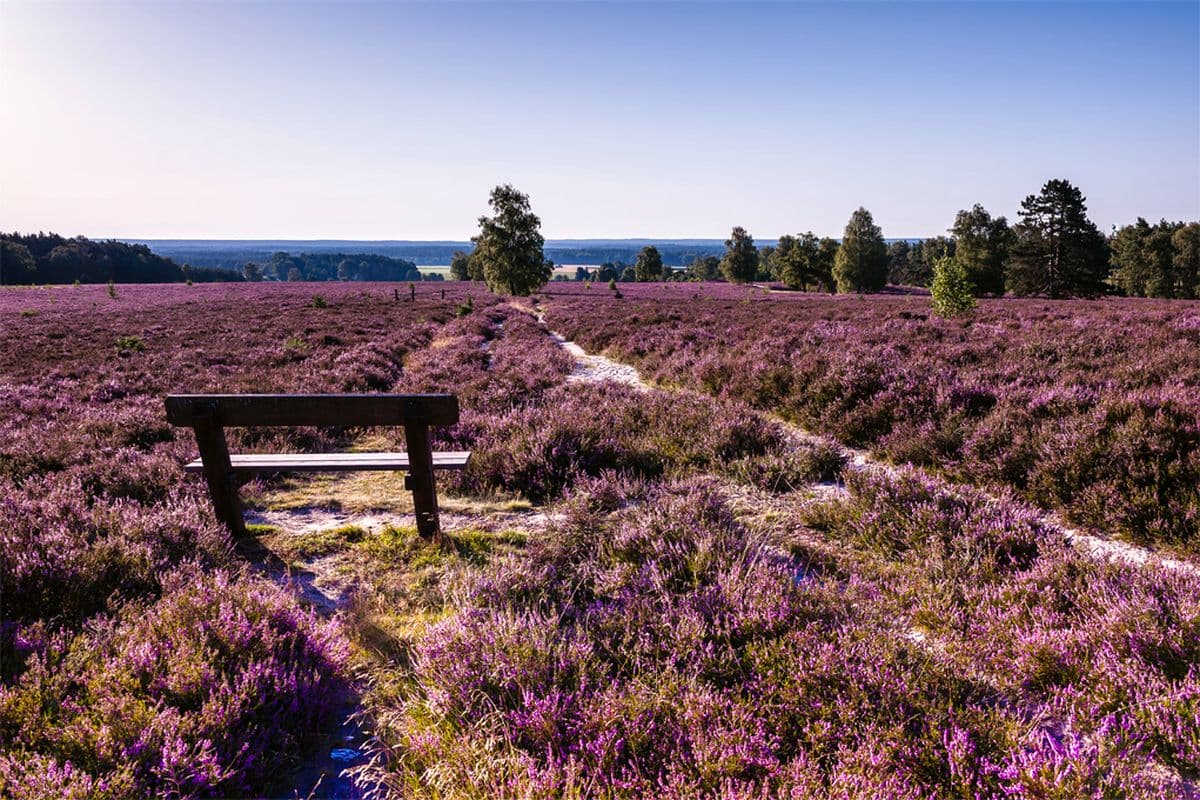
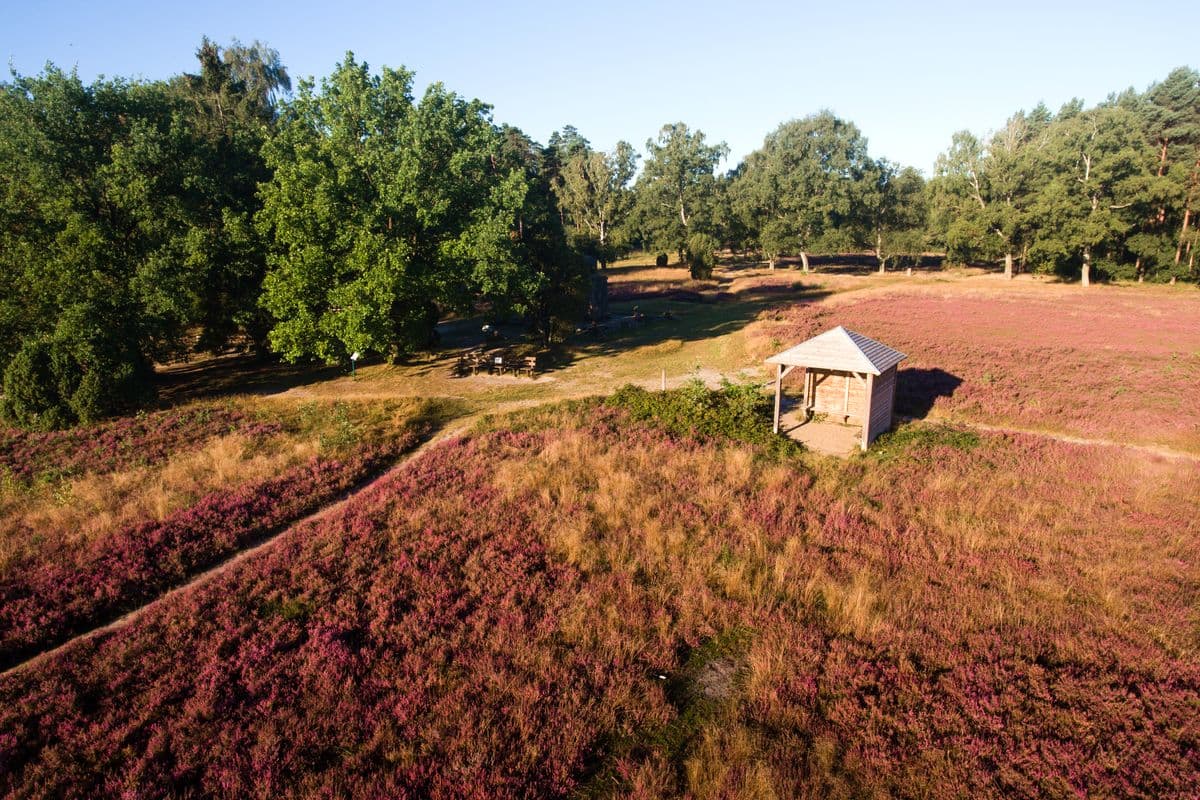
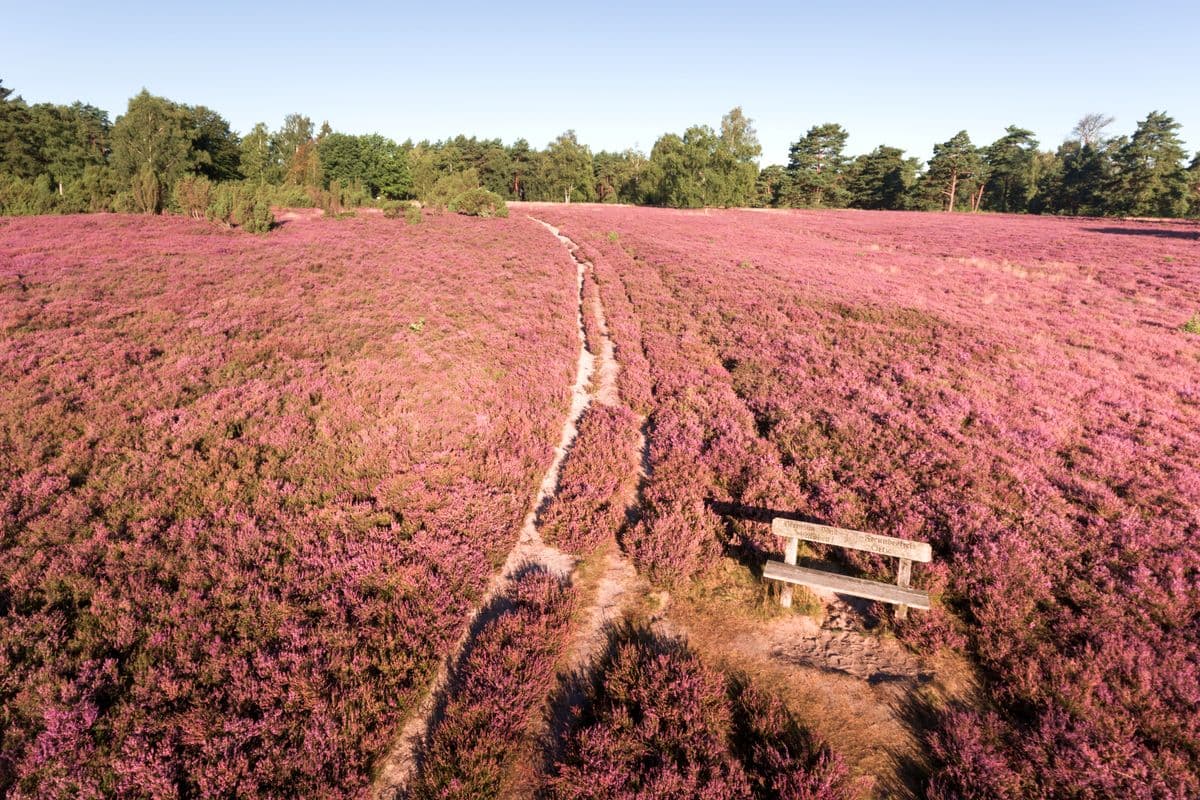
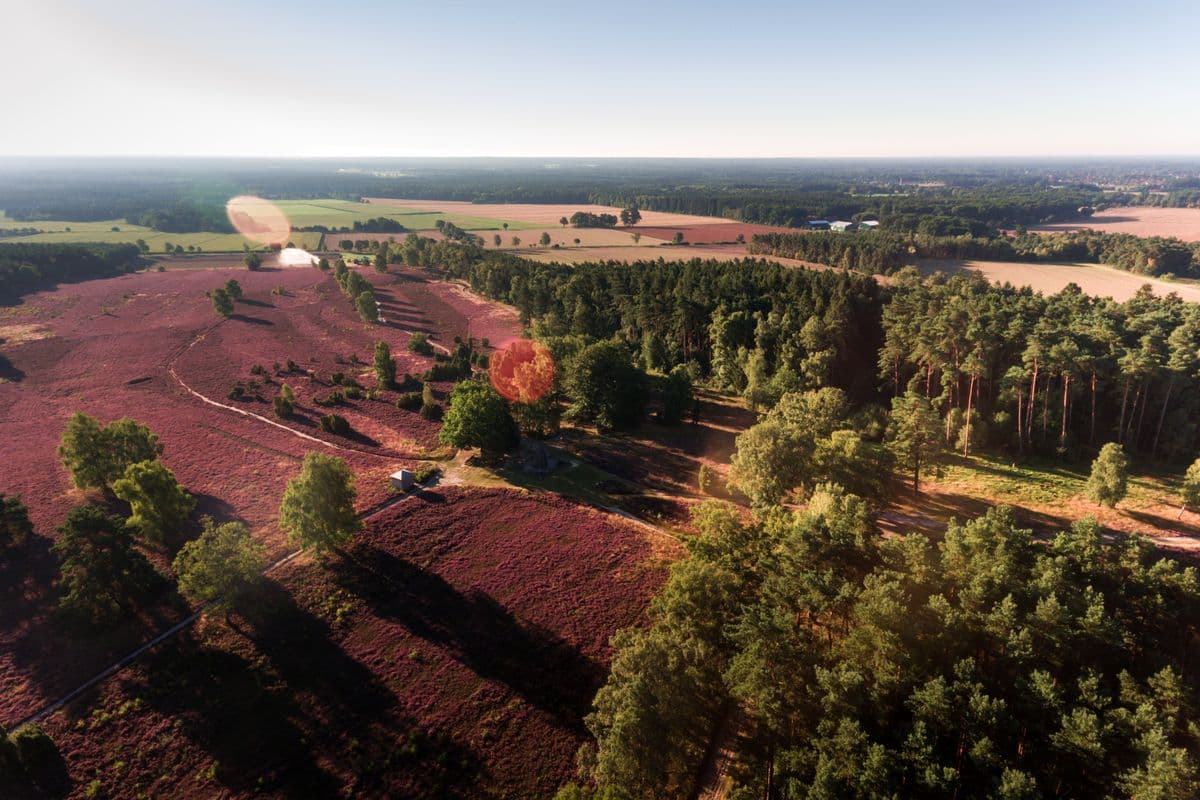
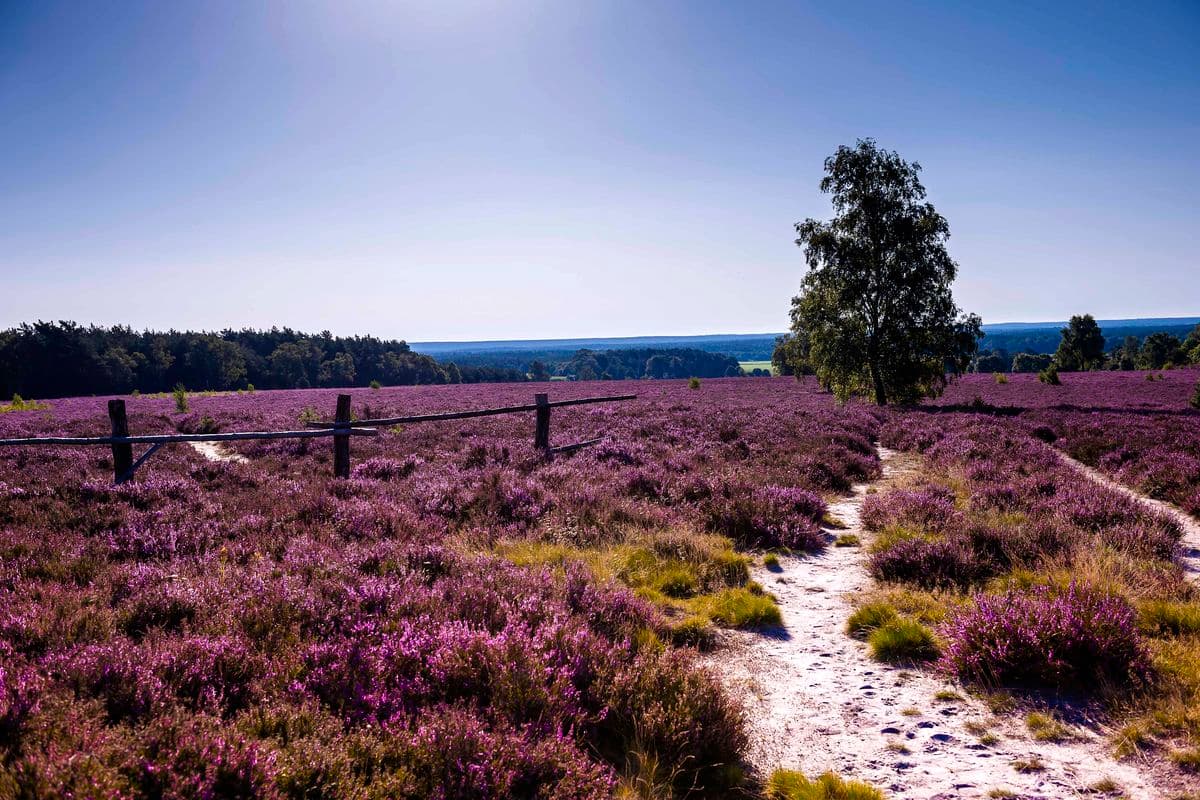
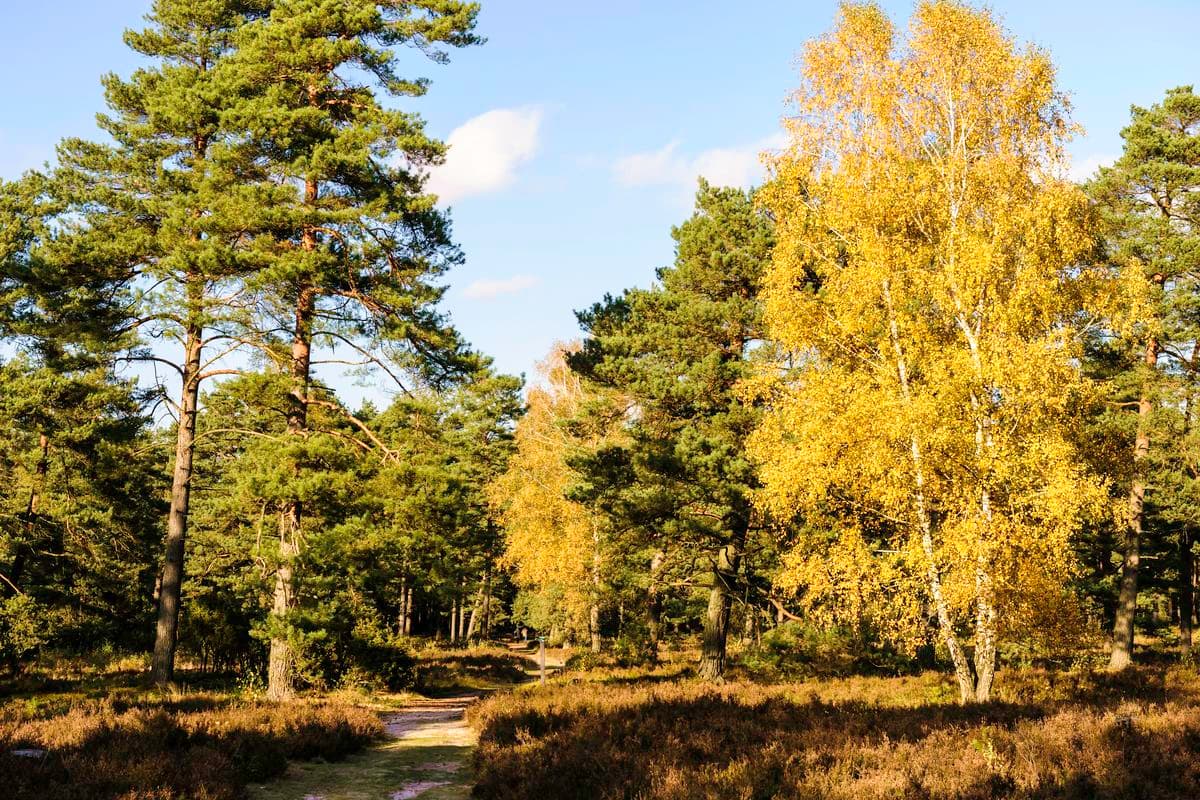
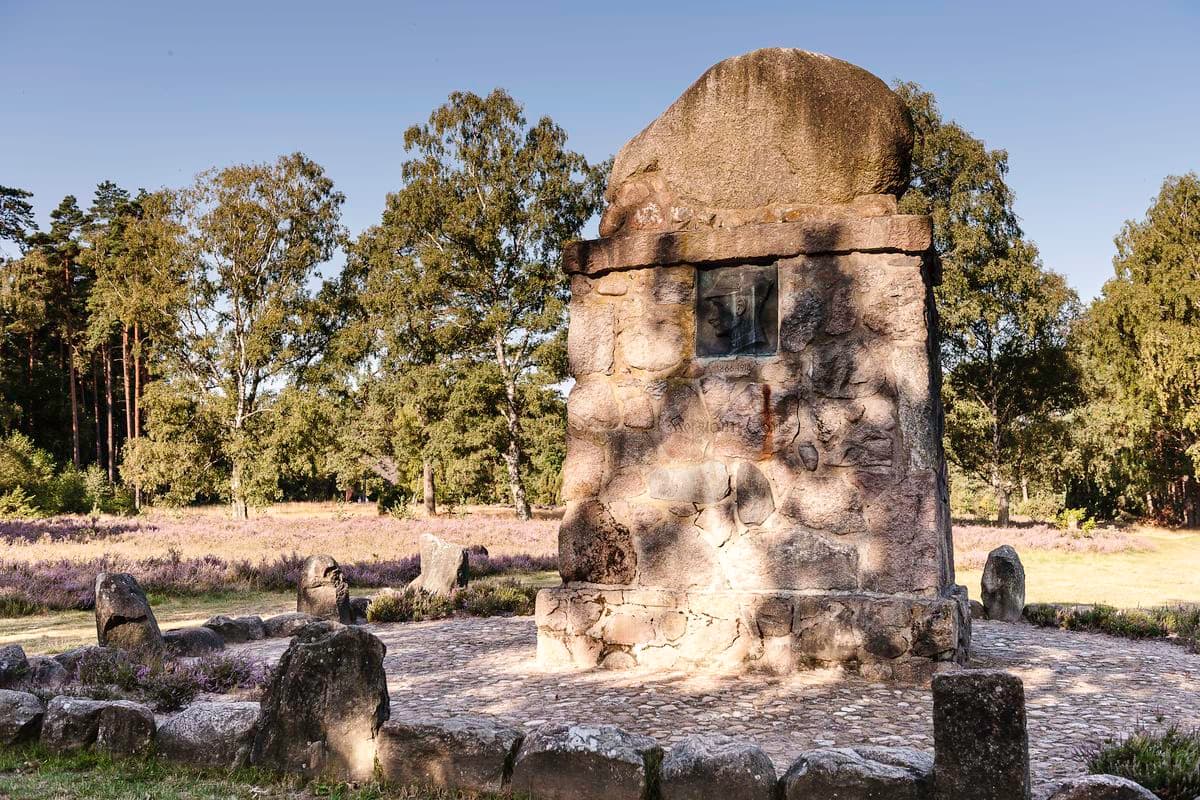
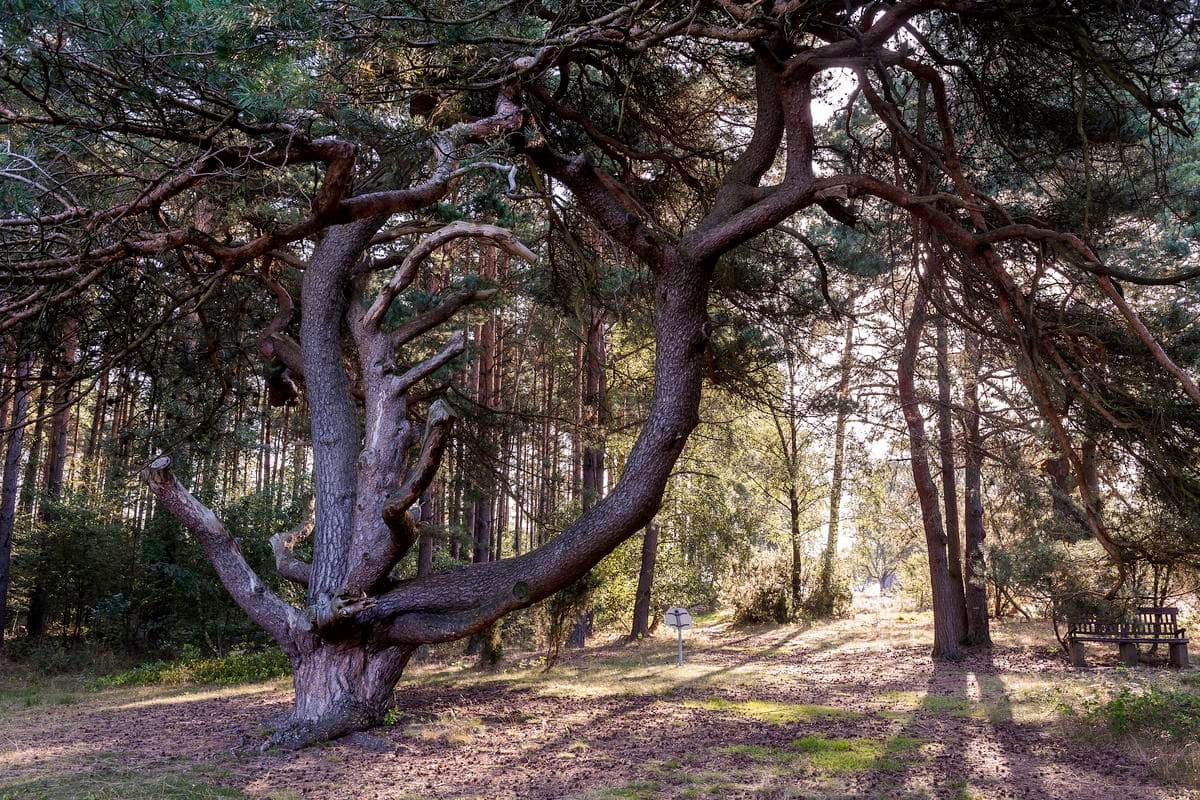
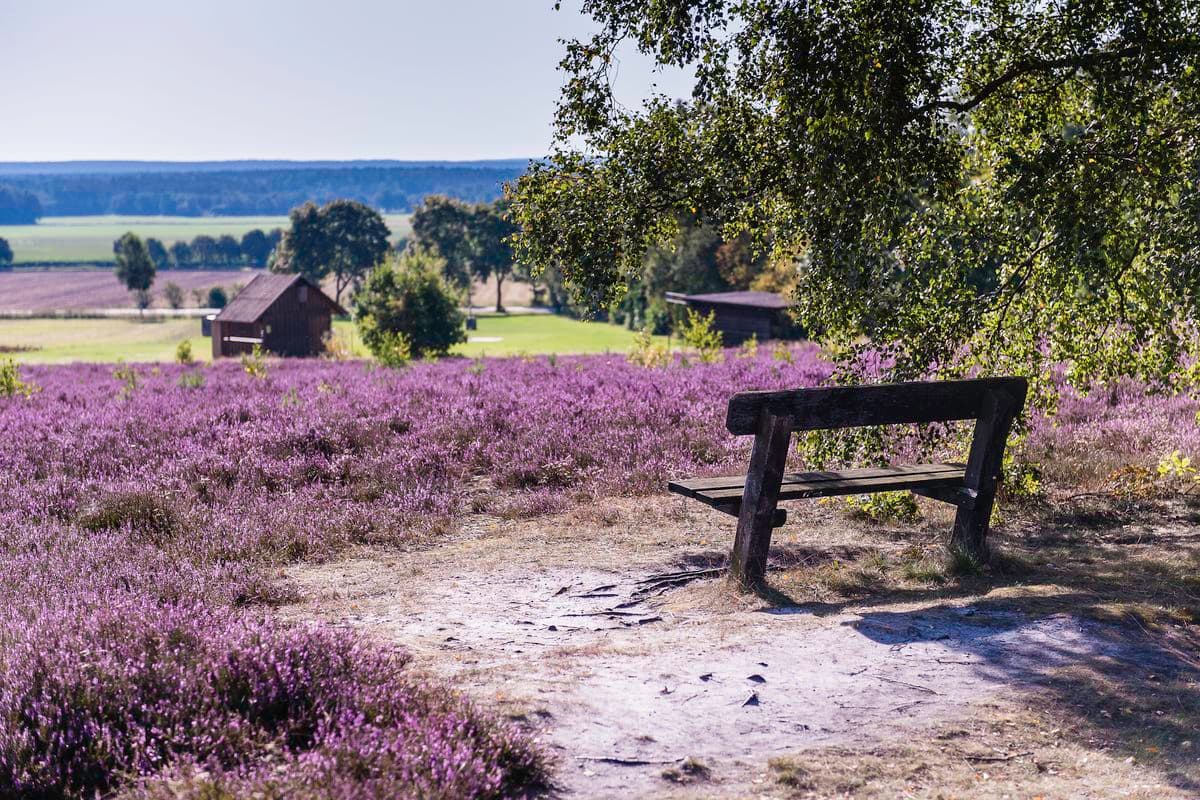
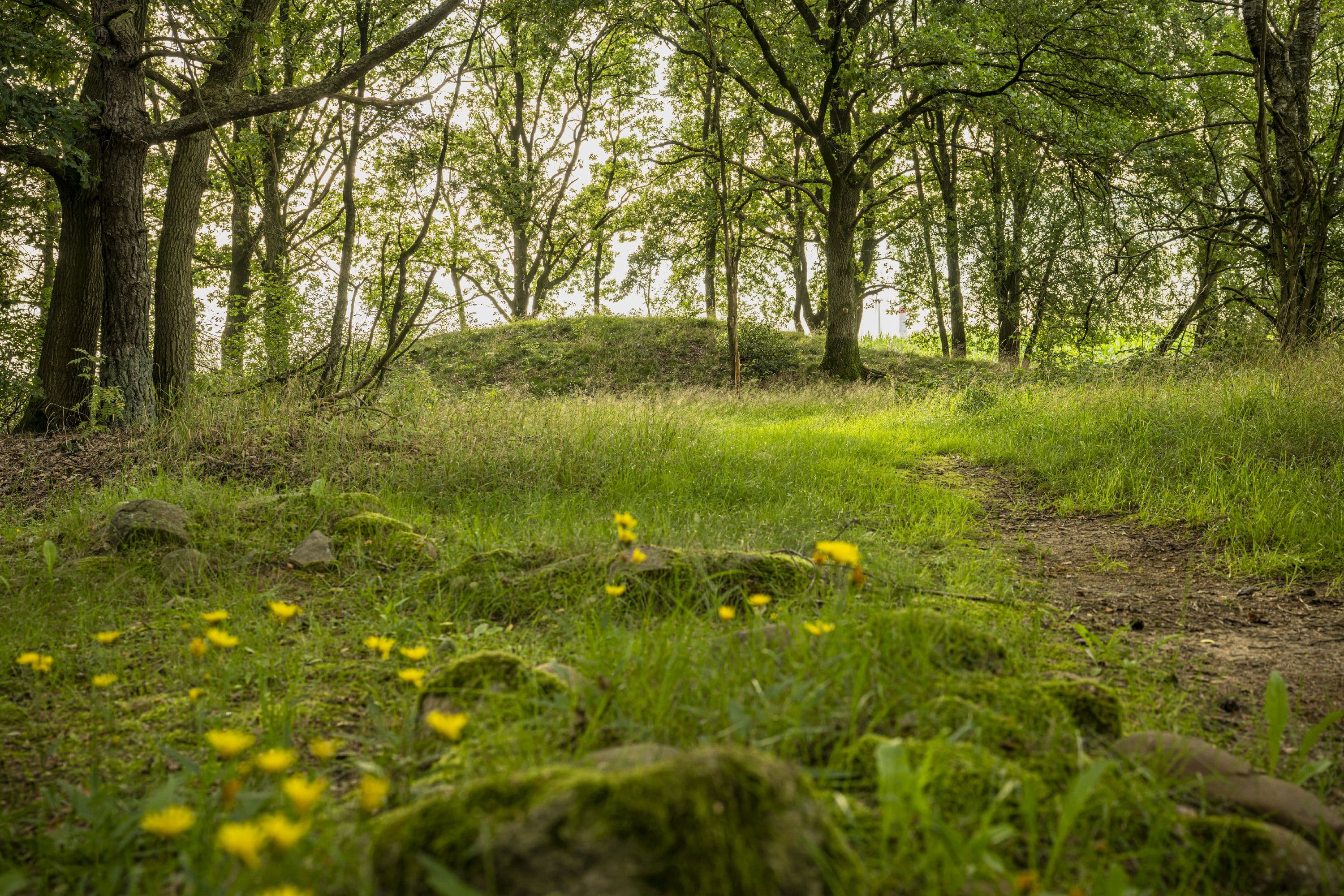
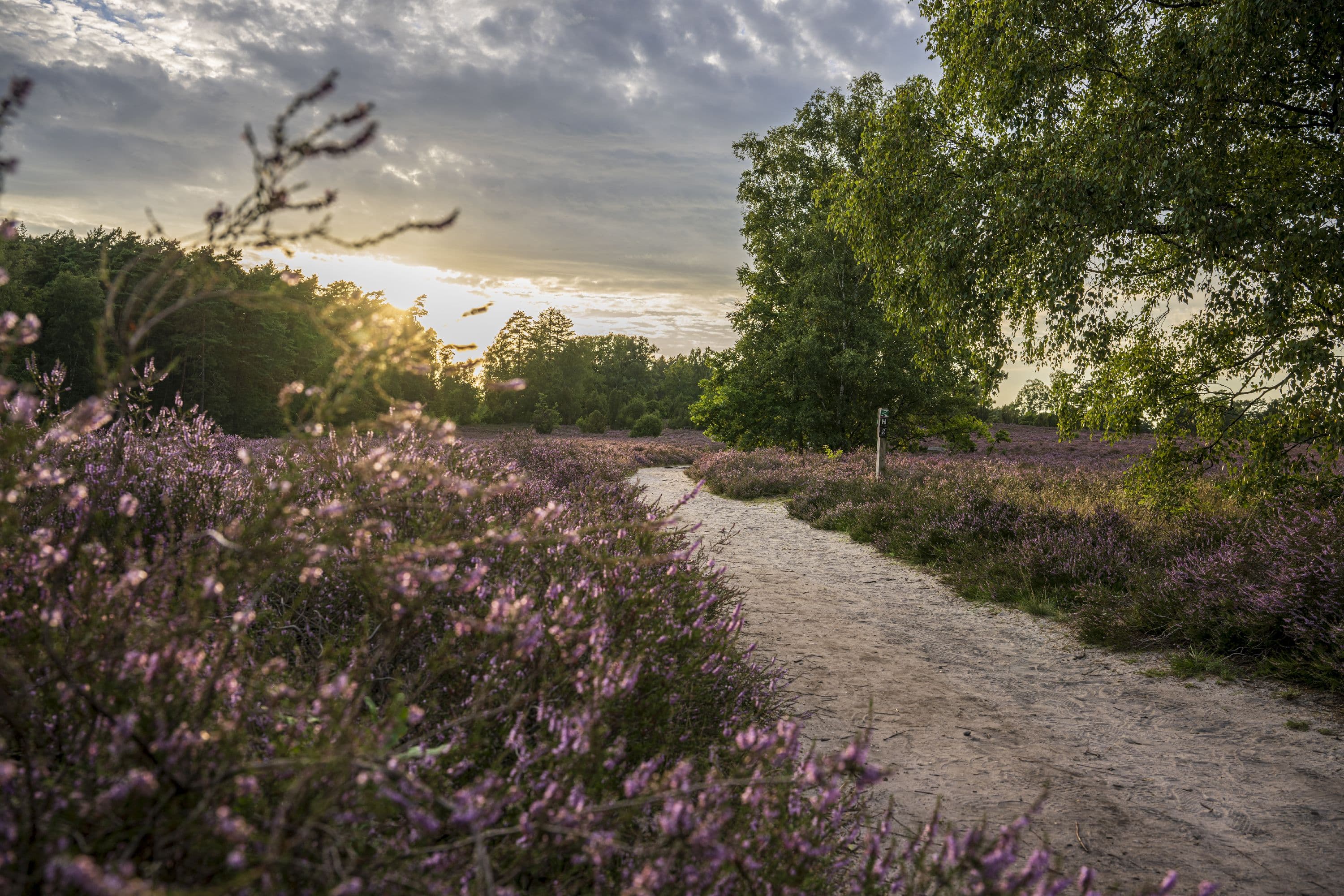
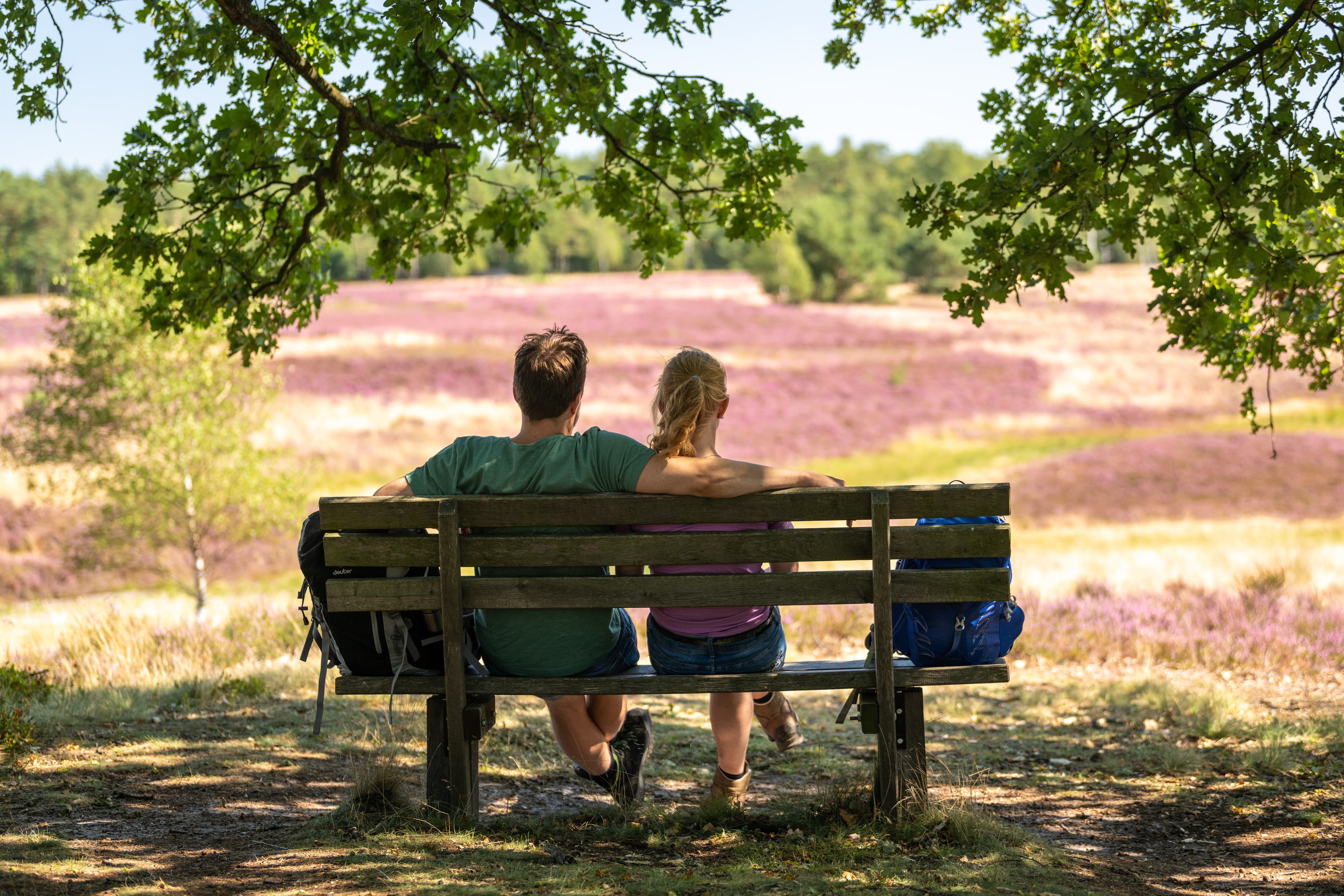
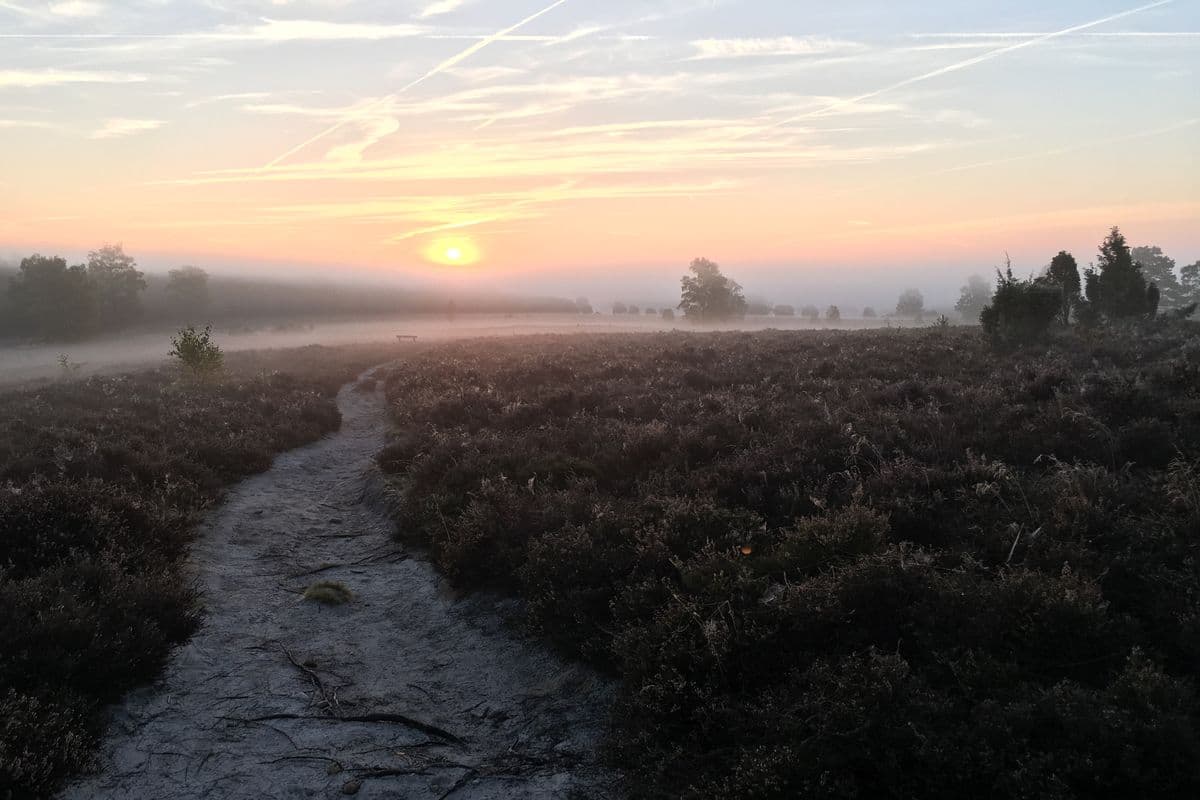
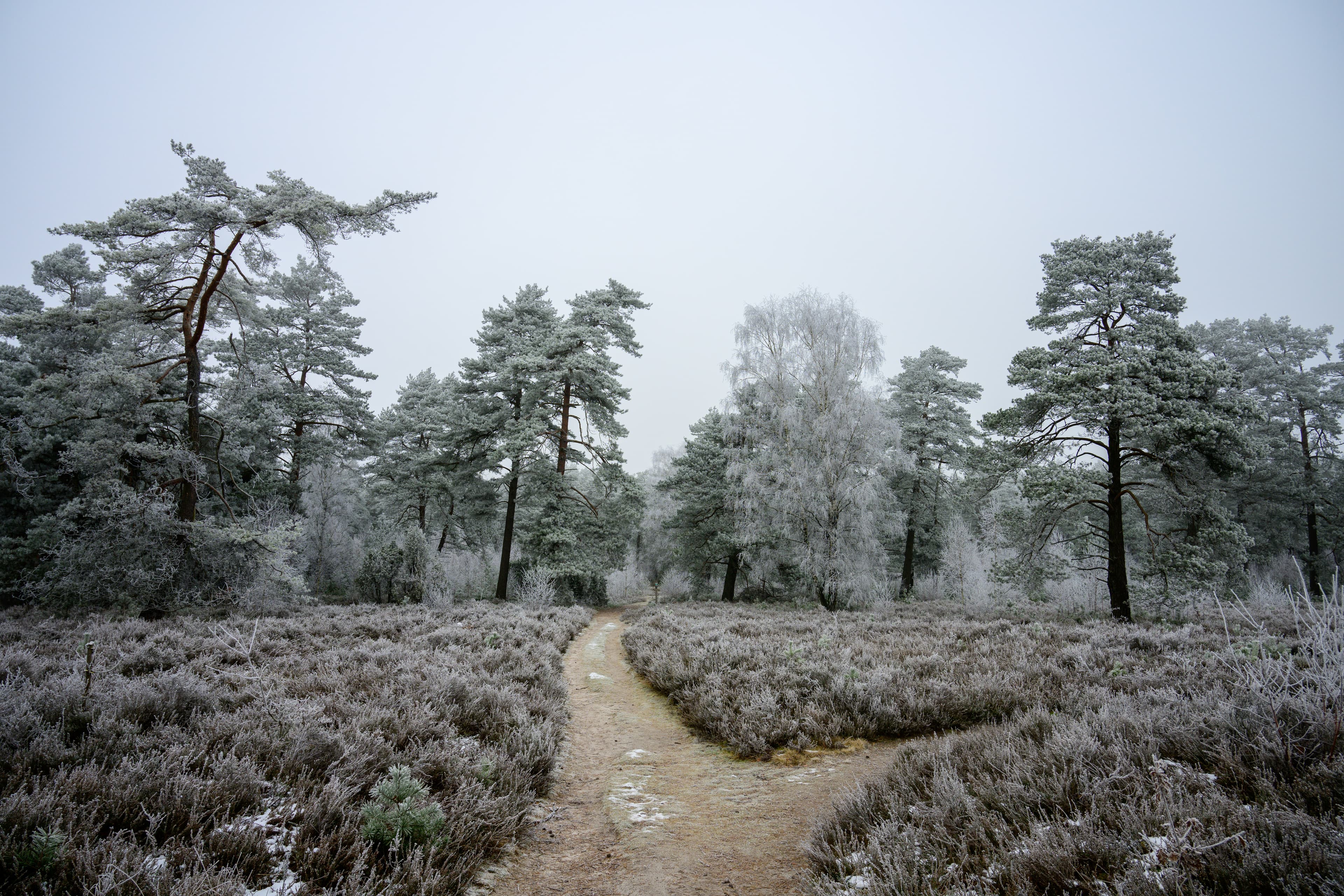
Einmaliges Panorama, ein sagenumwobener Elfenberg und Hügelgräber - auf dem Wanderweg W4 "Sagenhafte Sicht im Elfenland" im Naturpark Südheide gibt es für Wanderfreunde so einiges zu entdecken.
3 verschiedene Routen und Längen des Wanderwegs sorgen dafür, dass jeder Wanderer seine Etappe findet.
Was erwartet Sie auf der Wandertour?
Am Parkplatz Wietzer Berg startet der Rundwanderweg hinauf zum Wietzer Berg. Auf der Kuppe des Berges befindet sich der Lönsstein als Gedenkstätte für Hermann Löns. Vom 102 m hohen Wietzer Berg aus bietet sich eine imposante Aussicht über die weitläufige Heidefläche auf die Landschaft der Südheide.
In südwestlicher Richtung liegt bei Bonstorf der sagenumwobene Elfenberg. Weitere interessante Wegepunkte des Wanderweges sind das Heidedorf Müden (Örtze) und in ein kleines Wäldchen eingebettete Hügelgräber aus vorgeschichtlicher Zeit. Neben der Heidefläche am Wietzer Berg säumen Wälder, Wiesen und Äcker den Weg.
Der Lönsstein - ein Denkmal an Hermann Löns
Hermann Löns (1866 bis 1914) gehört zu den bekanntesten deutschen Schriftstellern. Er arbeitete unter anderem in Hannover als Journalist bei einer Tageszeitung, wo er sich vom freien Mitarbeiter zum Chefredakteur hocharbeiten konnte. Der Journalistenberuf diente ihm jedoch nur als Broterwerb, während die Nebentätigkeit der Schriftstellerei seine eigentliche Passion war.
Er besuchte regelmäßig die Lüneburger Heide, in der er Ruhe und Inspiration für seine zahlreichen Werke fand, aber auch die Natur erforschte. Die Romane „Der letzte Hansbur“ (1909), „Dahinten in der Heide“ (1910) und „Der Wehrwolf“ (1910) waren seinerzeit sehr erfolgreich. Im Jahre 1921 stellte der Deutsche Jägerbund auf dem Wietzer Berg bei Müden den Lönsstein im Gedenken an den Schriftsteller auf.
Ein echter Elfenberg?
Eine alte Sage gibt Aufschluss über die Herkunft des Namens „Elfenberg“: Am Johannistag des Jahres 1450 kam der Bürgermeister von Bonstorf mit seinem Gefolge zum Priester Magnus Lauenrod nach Hermannsburg und berichtete ihm, sie hätten einen „doden Keerl funnen“, der bis zum Halse in einem Butterberg steckte. Sie fragten, ob sie ihn auf dem Kirchhof begraben dürften.
Darauf entgegnete der Priester „se schullen öm stäken laten“. Die Elfen, „de öm da rin bröcht harren, kunnen öm ok beholen und wören öm ok bald ganz rintrecken, dat nix mehr davon to sehn wöre.“ Auf dem Kirchhof dürften nur Christenmenschen begraben werden. Der da aber im Butterberg steckte, wo die Elfen buttern täten, sei sicherlich des Teufels gewesen. Am Tage nach dem Johannistag sei von alle dem nichts mehr zu sehen gewesen.
Mit dieser Sage könnte auch ein Bezug zu den nahegelegenen Hügelgräbern hergestellt werden. In alten Sagen werden die Begräbnisstätten der „Heiden“ gern mit dem Teufel und mit Elfen in Verbindung gebracht. Markante Grabhügel hatten im Volksmund nicht selten eigene Namen. So könnte mit dem Butterberg auch einer der Grabhügel gemeint sein.
Einer anderen Erzählung nach spielte der Elfenberg eine Rolle in der Hildesheimer Stiftsfehde (1519 bis 1523). Danach sei es am Johannistage 1519, einige Tage vor der Schlacht bei Soltau, im Brunautal zu einem blutigen Vorhutgefecht zwischen Kalenbergern und Lüneburgern gekommen. Der Kalenberger Ritter Hans von Ollershusen sei dabei mit seinem Pferd im Morast versunken und nur durch die Hilfe des gegnerischen Ritters Hans von Sporeken, einem alten Waffengefährten, gerettet worden.
Die Hügelgräber von Bonstorf
Zwischen Backeberg und Bonstorf zeugen sechs Hügelgräber von einem Friedhof, der zum Ende der Jungsteinzeit und zu Beginn der Bronzezeit angelegt wurde.
Auf einer Informationstafel sind die Ausgrabungsergebnisse zu einem Grabhügel dargestellt, der sich auf einer benachbarten Ackerfläche befand. Aus Feldsteinen wurde der Grundriss des Hügelgrabes rekonstruiert. Der Grabhügel war von einem Steinkranz eingefasst. Die Erdaufschüttung überdeckte eine Holzkammer, worin ein Mann bestattet war. Als Beigaben waren ein Tongefäß, ein Beil, ein Schwert und ein Dolch aus Bronze in das Grab gelegt worden.
Im nördlichen Randbereich des Hügels war eine Frau mit bronzenen Trachtbestandteilen bestattet worden. Die bronzenen Beigaben sind bezeichnend für die ältere Bronzezeit in der Lüneburger Heide (etwa 1500 bis 1200 v. Chr.).
Das Wichtigste der Wandertour in Kürze
imposanter Panoramablick
sagenumworbener Elfenberg
malerischer Heideort Müden (Örtze)
Hügelgräber
auf der langen Tour überquert man 3x den Lutterbach
Bindestelle in Baven - Zusammenfluss Lutter und Örtze

